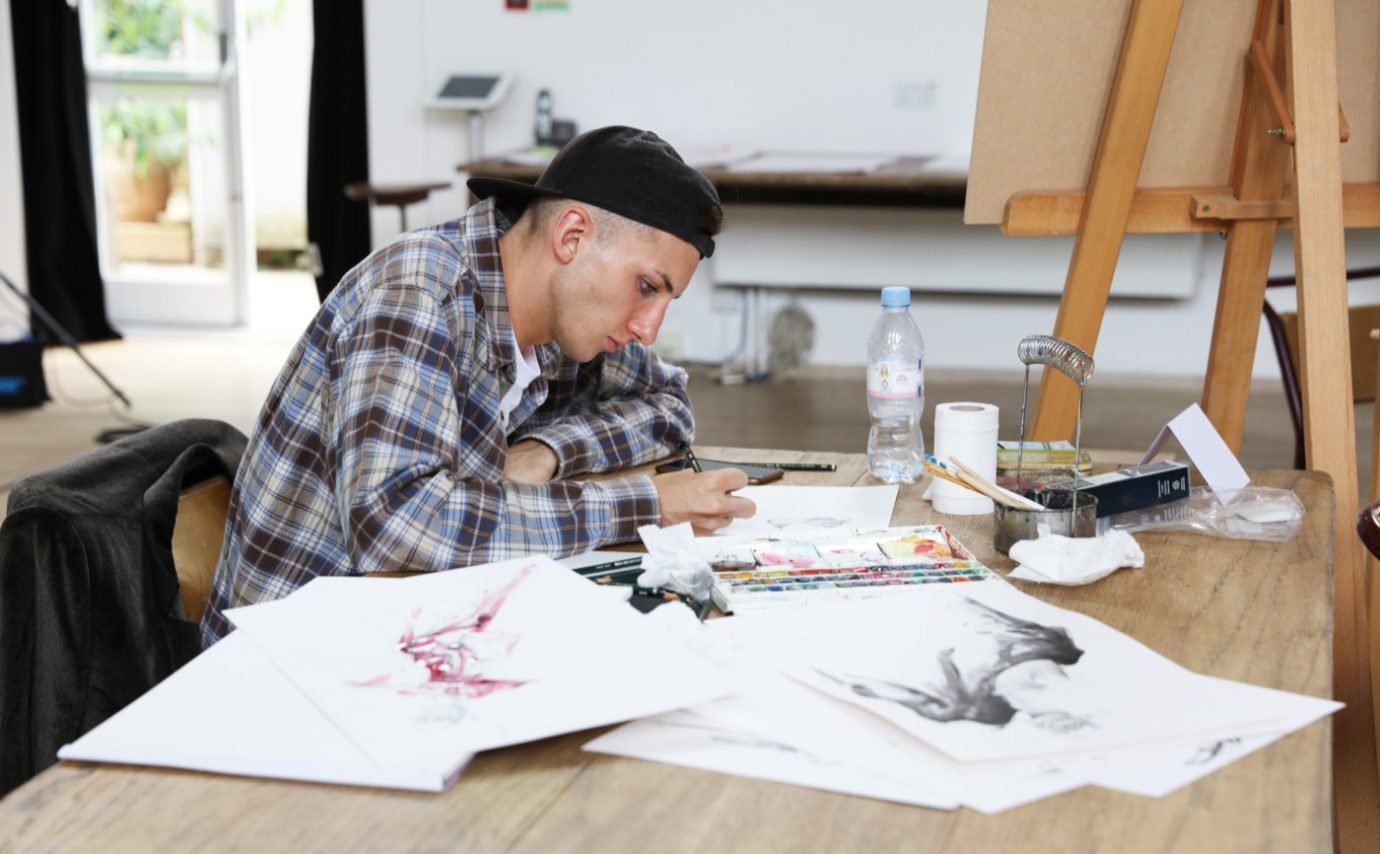In times of self-isolation, it can feel like our world is too small, our screen is too flat and the sources that we were normally drawing inspiration from are gone. Our dreams and nightmares have reportedly become more real and crazy than ever. Imagine, if instead of going to the library, you could simply reflect on your psyche and turn a conclusion into a project, a drawing, a garment, or a collection.
Nightmares and creativity during COVID-19
Why are we seeing such vivid dreams and how can we make them a part of our creative process?
Fashion has always been about chasing fantasies and selling dreams. When you google the buzzwords “fashion and dreams” the search engine produces more than 440 million entries. One of them being Christian Dior who was titled “Designer of Dreams” within the frame of the eponymous V&A exhibition or Iris van Herpen’s lucid collection. The complex concept of dreaming appears to be particularly appealing to creatives, maybe even because of its mystery and elusiveness.
With the closure of cultural institutions and the standstill of public life, inspiring sources are scarce. Establishments such as the MoMA have taken action and offer online courses to feed the culture-craving creatives with inspirational input. But what are one’s options when the screen cannot compensate for the general lack of stimuli anymore? Luckily, according to Freud, we are all mentally deranged.
As much as fashion evolves around dreams, it also unfolds as the ever-changing answer to consumers’ wavering wishes, and creativity is its tool. The psychologist, Margeret Matlin, defined creativity as a problem-solving process following the objective to find an original and useful solution. Therefore, she states different attributes as necessary: innate traits such as intelligence, but also external factors like knowledge, motivation, and encouraging environment. In times of a pandemic, the shortage in sincere sources of information or inspiring surroundings makes it difficult to meet but one of these requirements. What inspirational, daily stimuli are there in a twenty square meters large apartment?
The more obscure a dream appears the higher is the state of repression of one’s thoughts.
Just as fashion, the subconscious echoes one’s dreams and fantasies. And any reasonable conversation concerning dreams or fantasies has to refer to Sigmund Freud, eventually. The originator of psychoanalysis and pioneer of dream psychology was the first to explore the power of the subconscious in his book The Interpretation of Dreams. In his work, he discovers that the human psyche not only exposes one’s unrealized wishes in dreams but processes unsolved conflicts, traumatic experiences, fears, and insecurities. The more obscure a dream appears the higher is the state of repression of one’s thoughts. In other words, the higher our inability to deal with certain emotions, the more obscure the visuals that confront us with these emotions in our dreams.
The tiniest possible source of inspiration that would slip one’s conscious attention can be picked up by the subconscious and revealed in one’s dreams.
In general, dreams are a mix of elements dependent on the emotional stimuli of the previous day. The impressions of the day are often so frivolous that they are hard to recall. At night, however, randomness becomes meaningful. Responding to our @1granary Instagram stories, one follower admits, “I remember dreaming of a really cool design and wanting to wake up to draw it but I couldn’t.” No matter whether the respondent has seen the design before or not, the responsible mechanism reflects a powerful tool: the tiniest possible source of inspiration that would slip one’s conscious attention can be picked up by the subconscious and revealed in one’s dreams. The mind is like a parent regularly reminding an oblivious teenager of essential details.
Dreams are limitless, they follow no logical scenario. Which creates an abundance of new ideas beyond one’s awareness. The mind’s ability to condense and displace sensations into a dream offers various interpretations of its hidden meaning. Thus, dreams enable new perspectives and entirely extraordinary realities. This reflects an outstanding opportunity from which to derive creative input. Even more so as dreams serve as problems-solving tools, or respectively, one’s psyche does. Upon waking, the mind instantly tries to draw connections between the memories and ideas as they starred in one’s dream content. And thanks to the nightly think tank, any possible link might turn out as the very moment an idea gets born.
One’s pile of suppressed emotions might now become an indefinite source of inspiration.
Dreams show up as a patchwork of short-term and long-term memories. In times of self-isolation, the subconscious has only little short-term information to process. Now, dreams seem to deal with deep-rooted emotions and lasting impressions. As such, one respondent wrote, “I was sitting in an open field, while Tim Walker’s V&A exhibition Tim Walker: Wonderful Things came into life – the people as well as the animals!” Simultaneously, one’s pile of suppressed emotions might now become an indefinite source of inspiration. The psyche is brimming with suppressed wishes, fantasies, feelings, fears, trauma and thoughts. From precise visions, like a yellow plastic badminton suitcase coming down the Balenciaga runway, to recurring dreams about snakes – scribbling down whatever you can recall from your dreams might replace research as the new source of inspiration.
Now more than ever, the industry has the opportunity to heal itself from within. The current breakpoint grants the necessary time to reflect on each and everyone’s mental state of mind. Further, if we learned how to pay attention to our inner voices, we could find answers to how to move away from an unhealthy environment with extensive expectations, dreadful deadlines, and a mentality that eliminates rather than fosters creativity. There is a silver lining in a world over which COVID 19 had cast a cloud – and it might be just one dream away.

















